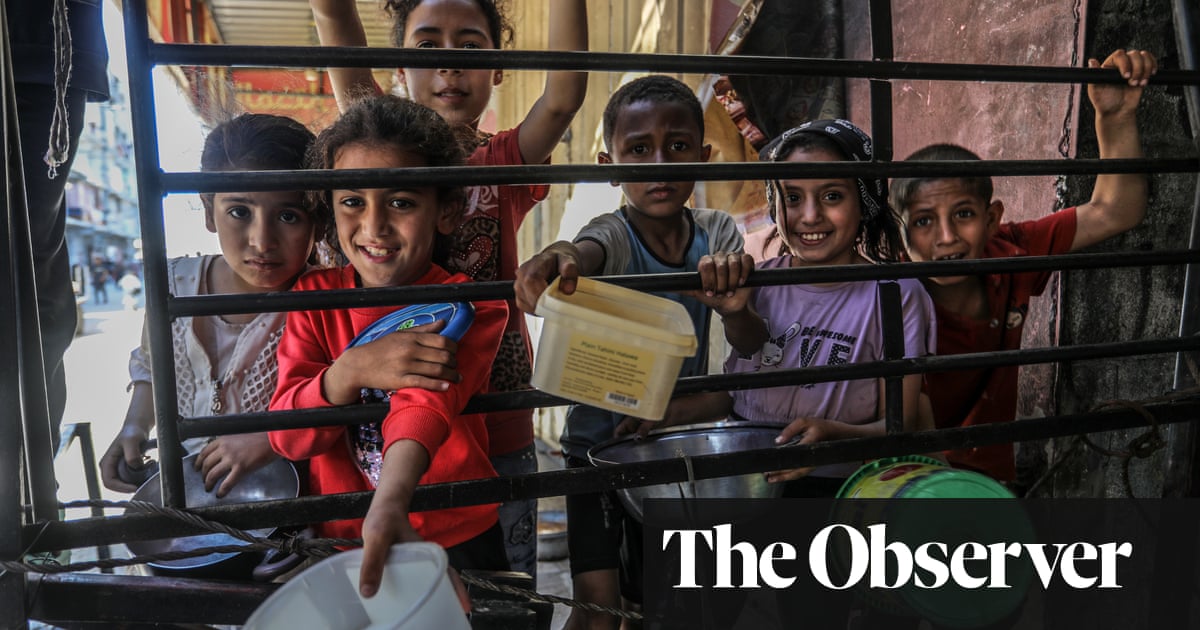Two hundred and fifty calories corresponds to two slices of supermarket wholemeal bread available in the UK, constituting twelve percent of the recommended daily nutrition intake. In the northern region, currently grappling with a UN-defined “catastrophic” level of hunger, this amount equals a full day’s worth of caloric sustenance.
Amidst Israel’s six-month conflict with Gaza, triggered by Hamas’s sudden and brutal assault on southern Israel’s border communities on October 7 last year, resulting in the death of 1,200 individuals, mostly civilians, and the capture of nearly 250 others, severe hunger has become widespread in the coastal enclave.
Access to food is critically scarce for those with financial means, while for the impoverished—especially with Israel impeding humanitarian aid delivery for an extended period—securing sustenance has evolved into a life-or-death struggle.
The IPC reports, a UN-backed hunger monitoring body, predict that 1.1 million individuals, half of Gaza’s population, could face catastrophic hunger within three months if the conflict persists without escalation.
A mother narrated to the British aid organization Oxfam, “Before the war, we were healthy and robust. But now, both my children and I have visibly lost weight. We scavenge for anything edible, resorting to consuming wild plants or herbs just to survive.”
Another mother of six shared a similar ordeal with the World Health Organization, highlighting the exorbitant prices of wild plants in markets, the absence of essential food items like vegetables, fruits, or grains, and the reliance on mallow, a common leafy weed, for sustenance. In the desolated and blockaded Gaza, under constant threat from bombings and artillery, the prevailing sentiment among many is, “I’m alive. I’m breathing.”
Mohammed Mortaja, among the hundreds of thousands displaced to Rafah in the south, expresses a singular focus on survival, detached from hope and resigned to a state of emotional detachment.
The conflict has exacted a heavy toll on Gaza, claiming over 33,000 Palestinian lives, including more than 13,000 children, as per Gaza’s health ministry records.
In the aftermath of relentless violence, compounded by years of Israeli blockade strengthening Hamas’s grip, Gaza stands as a stark reminder of its lost vibrancy rather than its present reality. Entire residential complexes and neighborhoods lie in ruins, hospitals reduced to rubble, universities demolished, and agriculture devastated. The disruption of electricity supply has further exacerbated the crisis, impeding water treatment and contributing to the spread of diseases.
Satellite imagery analysis by the United Nations Satellite Centre reveals that 35% of Gaza’s buildings have either been destroyed or damaged in the conflict. The displacement of over 80% of the population to overcrowded and unsanitary shelters underscores the humanitarian crisis unfolding in Gaza.
Efforts to deliver aid have been impeded by Israel’s closure of land crossings, with air drop operations facing challenges such as parachute failures and misdirected aid drops into the sea.
The looming question for Gaza pertains to the trajectory of the conflict. Despite mounting international condemnation and calls for increased aid access, the specter of famine persists, with concerns over the fate of Rafah, home to 1.5 million individuals, looming large.
As the region braces for a potential Israeli incursion, residents grapple with fear and uncertainty, contemplating evacuation towards the sea amidst the pervasive sense of impending danger.
The pervasive atmosphere of fear has prompted desperate measures among those seeking refuge, including appeals for financial assistance to navigate the hazardous journey across the border.
The protracted conflict, marked by escalating casualties and humanitarian crises, underscores the urgent need for a ceasefire and concerted international intervention to avert further suffering.
Hamas’s demand for Israeli forces to withdraw from Gaza clashes with Israel’s resolve to eliminate Hamas, setting the stage for a prolonged and uncertain conflict.
The failure of Israel’s military campaign to decisively dismantle Hamas’s infrastructure underscores the complexity and protracted nature of the conflict, with no clear resolution in sight.
As the war drags on amidst growing international criticism and isolation of Israel, the primary casualties remain Gaza’s civilian population, bearing the brunt of the prolonged hostilities and humanitarian crises.
